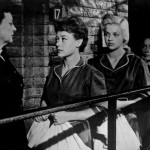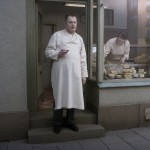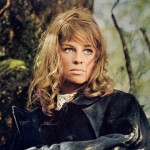Robert Tanitch reviews the latest DVDS
SEVEN SAMURAI (BFI). 16th century farmers engage itinerant samurai warriors to protect their village and livelihood from brutal bandits. For many people in Britain Akira Kurasawa’s 1954 masterpiece was their introduction to Japanese cinema. But what they saw was a much truncated version. The BFI is now releasing the full three-and-a-half hour epic. The Takashi Shimura is the dignified and noble Samurai leader. Toshiro Mifune is the volatile clowning thief who wants to be a Samurai. The film has inspired many directors and not least John Sturges’ Western, The Magnificent Seven. A masterpiece.
THE HUNCHBACK OF NOTRE DAME (Odeon). This 1939 American version of Victor Hugo’s Gothic novel is still the best. Charles Laughton’s extraordinarily ugly Quasimodo is a triumph of make-up. An easy comparison (and one the film draws) would be to say he looks like a Notre Dame gargoyle; but what he actually looks like is a naughty over-grown mentally handicapped schoolboy whose distorted face will remind some people of Francis Bacon’s self-portrait. There are some grotesque close-ups, notably during the public whipping and when he is crowned king of the clowns. Laughton’s success is to reveal the man under all the make-up. Director William Dieterle’s handling of the seething crowds owes much to German cinema.
BACHELOR MOTHER (Odeon). Wishful sentimental thinking for single mothers was an unlikely box office comedy hit in 1939; even more so when attitudes were so different to what they are today. Poor shop girl (Ginger Rogers) is mistaken for the mother of an abandoned baby. The playboy son (David Niven) of the owner of the emporium where she works falls in love with her and wants to marry her. She continues to let him (and everybody else) believe the baby is hers and nobody turns a hair.
THE PATROL (Soda). British film, directed by ex-soldier Tom Petch, questions the war in Afghanistan. There are seven men, two land rovers and a lot of desert. “It’s not our war,” grumble the soldiers. Morale is at an all-time low. They haven’t the proper ammunition, guns and radios they need to fight. The dusty desert reality (grittily filmed with a hand-held camera) is constantly undermined by the delivery of the dialogue which always sounds very artificial. The voice-overs are particularly false.
FLYING DOWN TO RIO (Odeon). This 1933 film launched the partnership of Fred Astaire and Ginger Rogers; and in supporting roles they easily upstaged the boring stars (Dolores Del Rio and Gene Raymond) and gave this indifferent Hollywood musical a bit of a lift. The high spot is the extended Carioca dance number. The finale with the chorus girls on airplane wings is Busby Berkeley kitsch but without Busby Berkeley’s wit and inventiveness
THE STORY OF VERNON AND IRENE CASTLE (Odeon). This 1939 film ended the partnership of Fred Astaire and Ginger Rogers. It is not your usual escapist comic fantasy but a quasi-biography of two famous but now long-forgotten pre-World War 1 ballroom dancers who popularised the fox-trot, ragtime dances, tango and their own dances. The choreography is theirs rather than Astaire’s. The Castles’ friend in real life was black. In the movie he became a white man and was played by Walter Brennan.
KILL YOUR DARLINGS (Universal). Strictly for fans of the Beat generation, who are here observed when they were at Columbia University in the early 1940’s and behaving very badly. In his choice of roles on screen and stage, Daniel Radcliffe continues to do everything he can to distant himself from Harry Potter. He is cast as the Jewish poet, Allen Ginsberg, who has a crush on Lucien Carr (Dane DeHaan) his mentor and seducer who is also a killer. The self-conscious, look-at-me art house editing may irritate some audiences.
To learn more about Robert Tanitch and his reviews, click here to go to his website











